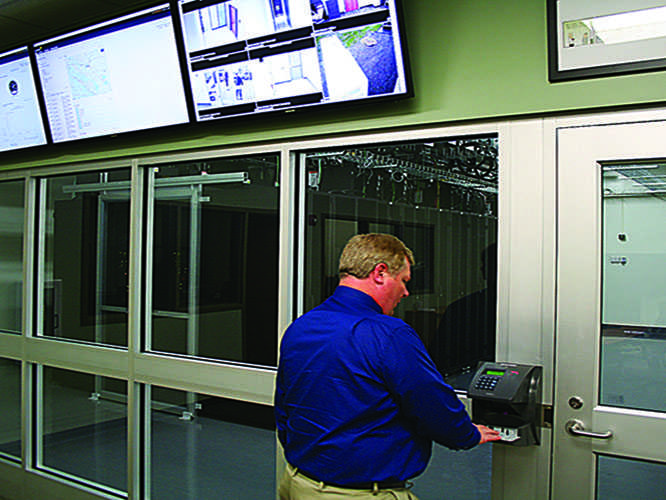Data storage in the digital age
Ever wonder where all those class projects go when you’ve saved and filed them away on a school computer?
“It looks like Fort Knox,” said Chip Eckardt, the Eau Claire information security officer. “They’ve got flywheel generators and a gas emergency generator that’s bigger than a small house.”
The Regional Data Center holds information from partners UW-Eau Claire, Chippewa Valley Technical College and WiscNet, a 490-member group providing wireless services to schools and public organizations across the state.
All three entities contributed to build the $1.5 million project. Eau Claire committed $250,000 in rent to the project, WiscNet pitched in $500,000 and CVTC bears the brunt of the cost at $800,000.
The center also holds data from the Cooperative Educational Service Agency 10, or CESA 10, which represents more than 45 school districts in the area, said Thomas Lange, CVTC’s chief information officer.
Lange knew from experience as tech director for Fall Creek and Rice Lake school districts that local schools don’t often have access to proper data storage centers.
“They don’t have the ability to have a data center,” Lange said. “Most times their network closets are thrown literally into closets. Buildings weren’t built with data centers in mind, so I knew they may be interested.”
Lange said the project allows Eau Claire and school districts to store information in the same place instead of building separate facilities.
Adrian Salazar, CESA 10 Information Technology assistant system administrator, said the data center allows schools to share payroll programs instead of buying separate software and storage.
“One of the things a school district needs to achieve is a balanced budget,” Salazar said. “Schools like it because they don’t have to invest in security. They can collaborate and pool their resources.”
Salazar said in the year since the data center has been open, it has met expectations.
“Its an opportunity for public entities to save taxpayer money,” Lange said. “The only reason why we did this is a lot of these entities can’t afford to backup their data in their current environments.”
The center uses an A and B side flywheel generator system to power the operation. Neither side needs the other to work so if one side goes out, the building keeps working.
“This is an important part of a data center redundancy,” Lange said. “We built it as a state-of-the-art data center, we generate all of our own power. A flywheel system … turns a 750 pound disk at 72 RPMs. That momentum creates the power.”
If the power goes out, flywheel generators keep spinning until a 150 kilowatt generator — up to the same standard as hospital
generators — kicks in.






